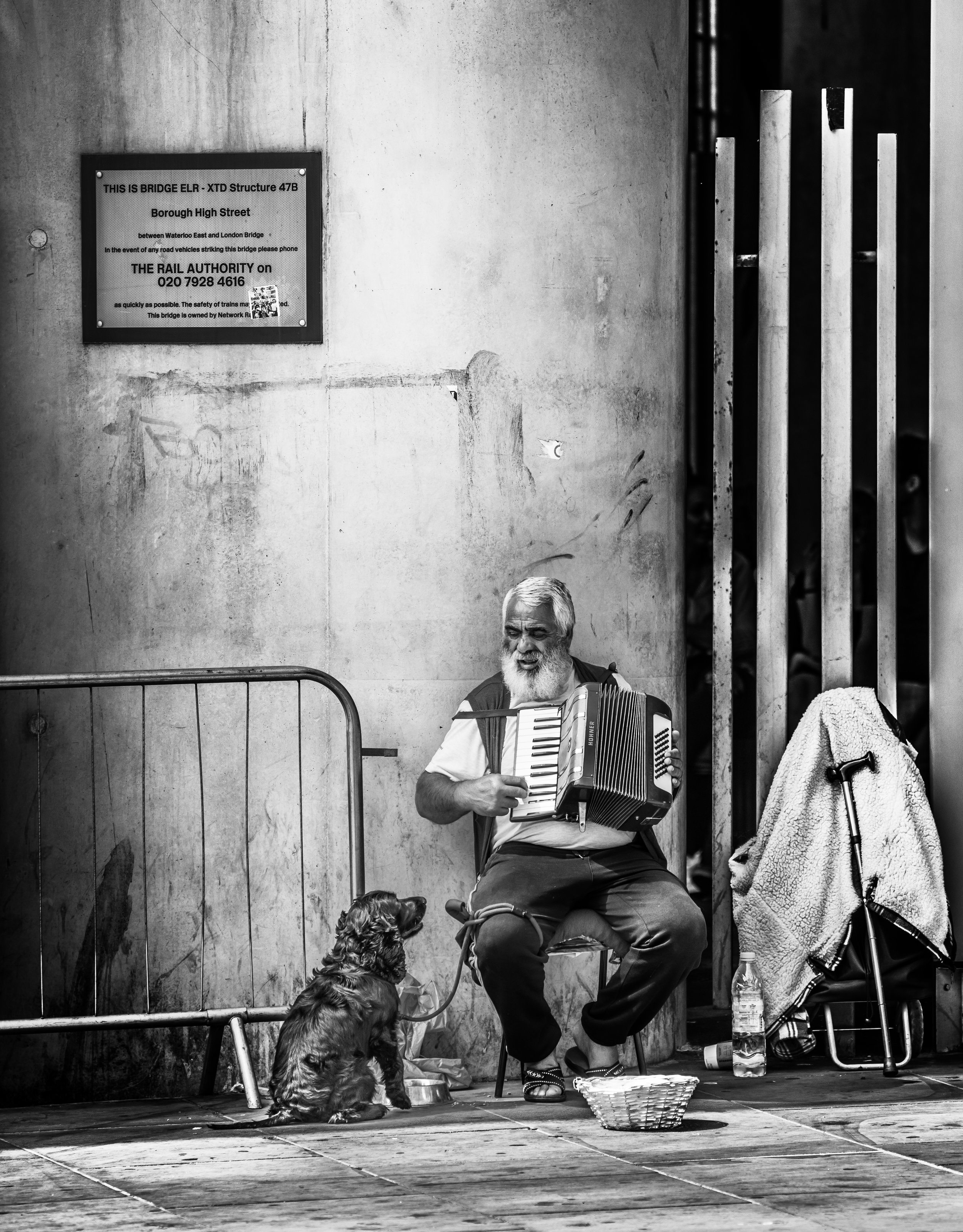Every now and then, I like to take my camera to central London and shoot some street shots. There's something mystical about capturing humans. Capturing people going about their everyday lives seems to invoke emotions in us, perhaps because we identify with others or maybe we simply like watching other people.
A Street entertainer playing the accordion while his dog admires him - July 2018
The way I look at street photography is that a street image freezes and encapsulates a moment that is real and happening. From the moment that image is captured, everything within it start to age and change with time. The person or the people in the photo will age, the cars and clothes will go out of fashion and probably become obsolete, the streets and buildings and people living in them will change. Now fast forward 20, 30 or 50 years and then the image will be a fascinating bygone moment from the past. A moment most probably forgotten. Even an average street photo the didn't say much 50 years ago have a few stories to tell now. It would tell us the older folks in the photo have almost definitely all passed away. The younger characters, if alive are now old people with grandchildren of their own ... It's a little piece of history that is fascinating because it's old. Then there is the fashion, the cars, the streets and buildings. They all change with time and your street shot just like wine gets better and better with time.
In this day and age where images and videos with instant thrill go viral on social media, it's important not to lose sight of the "ordinary" and the "everyday". I say don't worry if your street shot hasn't got the instant wow factor. Don't worry if all your friends are not overcome by admiration. They would probably admire your "sunset shots" much more!. But as long as your street shot tells you a story or gives you an emotion keep it safe and let time do the rest. As long as you like it, keep it.
Vivian Maier who worked as a nanny and lived in Chicago as a nanny and took photos as a hobby never thought her photos would be worth much. She died a poor woman in 2009 and her possessions including her collection of 150,000 photos mainly on 8mm negatives were auctioned for a few hundred dollars. Vivian is now considered by some to be the pioneer of street photography and the prints and the royalties of her photos are worth millions. Her photos capture mainly the bygone era of the 1950s and 1960s in downtown Chicago. Her subjects; everyday people walking the streets of Chicago. Shoe shiners, labourers, mothers, grandmothers, the drunk and homeless, soldiers and cadets and just about every kind of character you could think of. Each photo is a little treasure, a little moment in history that would never ever return. Most people in Vivian's photos are either very old people or no longer with us, but the photos will remain and will continue to gives us a visual feast into how our fellow human beings once lived. That my friends is the magic of street photography.
Man looking curiously at me probably trying to work out of I was taking his photo - London - June 2018



